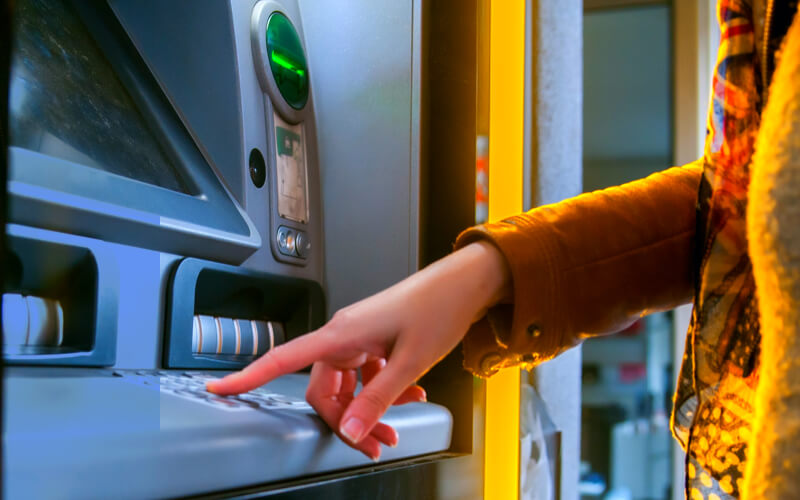Cash is a staple of everyday life. This is especially as small business struggle to side-step credit card processing fees by prioritizing cash payments. But where do you get your cash from? In all likelihood, it is from an ATM.
ATMs have been mostly free to use for a long time. This was not always the case. But, for many years, bank branded ATMs have not charged fees as banks agreed to let each-others’ customers access them for free. Certainly, ATMs at bars and service stations charge fees, but most people try to avoid these where possible.
The era of free ATMs might be over. It was good while it lasted. Banks have been closing their own stand-alone ATMs. Third-party non-bank ATMs have replaced them. For example, ATMx and Precinct ATMs have replaced stand-alone ATMs for many banks. Withdrawals at these third party ATMs carry fees. For example, unless your bank has a fee waiver agreement with ATMx, they will charge you $3 to withdraw your money.
Cash is getting more expensive. Unfortunately.
Why are bank ATMs disappearing?
The real reason for cutting ATMs is financial. They are a convenient service for customers. But they do not directly generate revenue. And, they cost money. So they look like an easy expense to cut or outsource.
Banks sometimes claim that people use less cash and ATMs are unnecessary. But, this is disingenuous. If cash were so disliked, and ATMs so unnecessary, why do third parties think they can make a profit by running ATMs?
People indeed used less cash during the pandemic and cash has become less popular because credit cards have become more convenient. But, we should not extrapolate too much from peoples’ behavior during the pandemic. Further, even if Australians use less cash, it is not obvious they would want to do away with it. This is for many reasons, including concerns about debanking and stasi-esque monitoring should we take this to the extreme of some CBDCs.
Discouraging cash is also a recipe for more fees. Companies prefer cash to card because credit card companies often charge fees. Business have often absorbed some or all of this cost. Companies are attempting to pass the cost to the consumer. But, this is not always possible. In any case, removing ATMs indirectly encourages more card transactions and more fee revenue in aggregate. This harms either the customer or the company or both. But, it benefits the card-service providers.
The big four banks might also prefer the idea of customers withdrawing cash at in branch ATMs. The big four had provided most of the bank-branded ATMs. They also have the largest branch network. Removing stand alone ATMs implicitly forces people to withdraw cash in branch, where ATMs often still exist. Collectively, this largely benefits the big four banks that have the widest branch network as it makes their dominance and footprint more salient and prominent to prospective customers.
How bad is the impact?
Losing free cash withdrawals impacts everyone. Paying another $3 to withdraw cash is a pain regardless of your income. But, we must also avoid overstating this impact: bank ATMs within bank branches are still free. Thus, in most city locations and shopping centers, a free withdrawal should be available albeit with some inconvenience.
It might impact some parts of the community more than others, nevertheless.
Presumably, lower income earners notice this more. They are also more likely to have lower balances. Thus, they might need to make more cash withdrawals more often, meaning higher total fees that they would also feel more. To be clear, this is not to suggest that higher income earners should pay higher fees to cross-subsidize other people’s withdrawals. But, educating people about which third party providers have fee waivers, and where withdrawals are free, is important.
Regional areas might also be harder hit. Regional areas have notoriously had worse access to banking and financial services. The workaround for customers is to withdraw cash at a bank branch, where possible. But, if banks are closing branches, those branches were already far apart, and stand-alone ATMs become more expensive, it could add costs.
In most cases, the real solution is education and transparency. Long ago, banks would advertise their branch network. Then, when withdrawals were free and widespread, this became redundant. But, now, consumers might not know where they can withdraw cash for free and they might have been lulled into a false sense of fee-related security. Forcing banks to clearly and accurately indicate their network and the fees involved will help inform people. It will also help to shame banks that have bad networks and for whom implicit fees are high.
The disappearance of bank-branded ATMs is nevertheless a return to the bad old days of ATMs. A throwback to when withdrawals were expensive and inconvenient. And, let’s remember, just because withdrawals fall on the back of higher fees, it does not imply that people dislike cash. Rather, it might just mean that they dislike fees.
